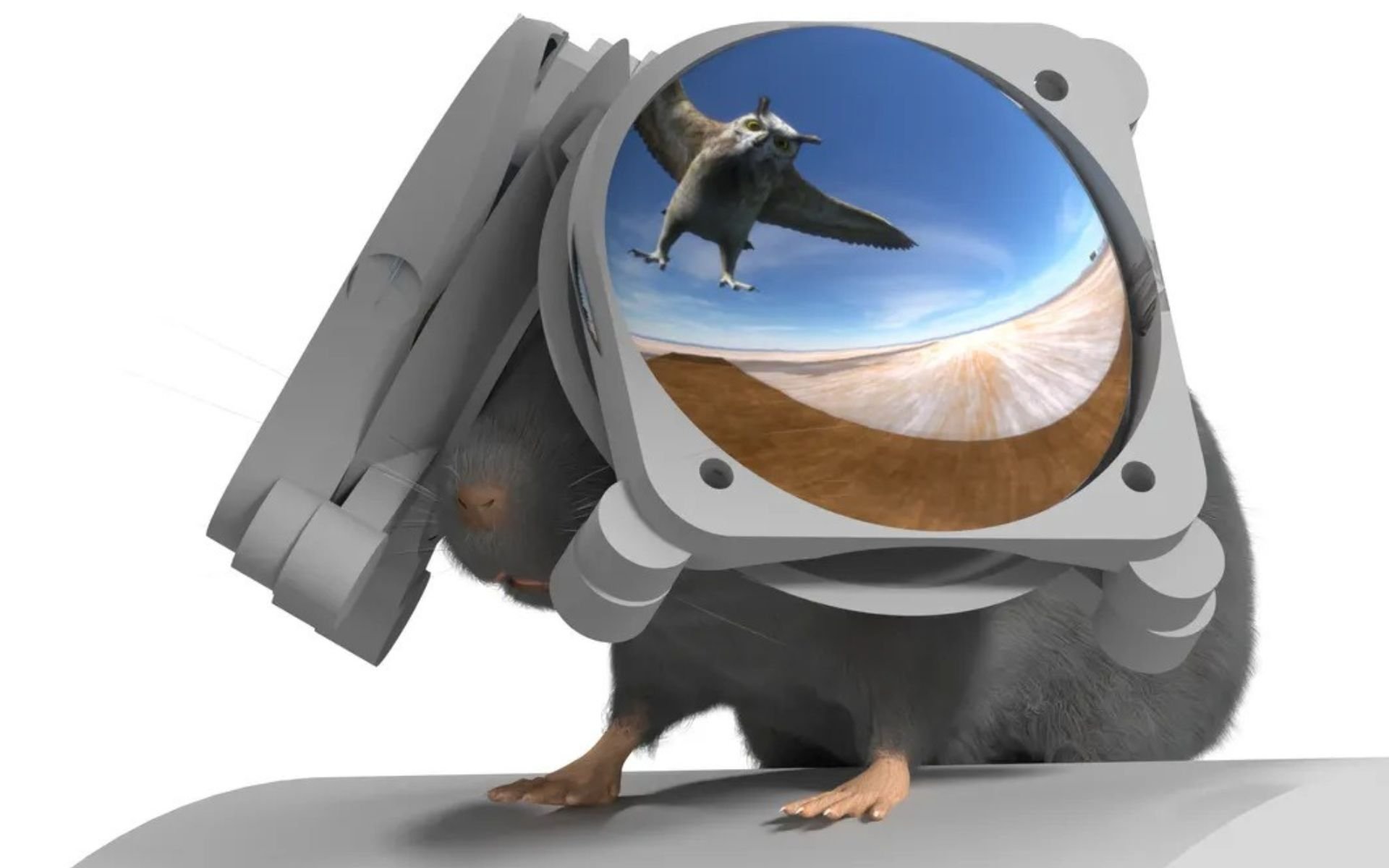In an innovative process, researchers introduced a new tool to laboratory mice: Special virtual reality glasses. Northwestern University’s recent discovery represents a breakthrough in neurobiological research.
For years, virtual reality (VR) has played a crucial role in the study of animal neurobiology. However, the lack of appropriately sized VR equipment for mice presented a challenge.
A new frontier in rodent research
The traditional method of using computer screens to create a virtual environment was limited in scope and interactivity. This is where Northwestern University’s latest invention—mini VR designed specifically for mice—makes a difference.
New VR glasses allow mice to experience a fully interactive, three-dimensional world. The technology surpasses previous methods by covering the mice’s entire vision, allowing them to move with them as they navigate the simulated environment..

In this research, airborne threats were simulated. Lead researcher Dom Pinke explained: Mice instinctively seek out predators. By projecting a dark, expanding disk into the VR environment, the team observed natural defensive behaviors in mice, such as running away or freezing.
Mice were placed on a specially designed mat. This allows them to move around in the VR environment, and researchers can study brain responses in real time.
iMRSIV
iMRSIV is different from human VR glasses. It is a stereo lighting VR system for miniature rodents. Instead of wrapping the head, it places two lenses and screens near the mouse’s eyes to provide a 180-degree view into each eye.
The advantages of iMRSIV over traditional VR systems are remarkable. In older VR methods, mice could see beyond the screens, which reduced immersion and made training difficult. The new system offers a more immersive experience, akin to being in the real environment rather than just looking at a screen in a room.

Daniel Dombeck, lead author of the study, believes: iMRSIV could significantly boost VR research. Not only is it more interesting, but it is also easier to use and accessible.
The team is excited to explore future scenarios where mice become predators, such as hunting virtual flies. This will allow investigation of complex brain processes involving depth perception and distance estimation.
Source: Tec Mundo
I’m Blaine Morgan, an experienced journalist and writer with over 8 years of experience in the tech industry. My expertise lies in writing about technology news and trends, covering everything from cutting-edge gadgets to emerging software developments. I’ve written for several leading publications including Gadget Onus where I am an author.













